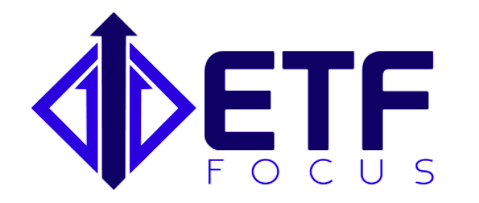It was another solid week of gains in the equity markets. Tech stocks once again led the way with the Nasdaq posting a 2.1% gain on the week while the S&P 500 and Dow were up “only” around 1.4%. Year-to-date, that puts the S&P 500 up around 8% with the Nasdaq up a very solid 15%.
Just one week after I talked about the financial markets showing a crack in their armor following further news on the Trump-Russia front, the markets looked impervious once again. On the negative side, we saw new home sales decline 11%. While that number in a vacuum looks troublesome and is worth keeping an eye on in combination with other housing data (pending home sales and construction spending data get released later this week) but the overall trend remains positive with year-to-date sales solidly up over the same period last year.
The investigation into the White House-Russia connections looks like it could be a long, drawn out affair. The markets don’t seem terribly concerned with it as another batch of stories this week drew a very tepid reaction. Absent some sort of bombshell news, it doesn’t look like this will be a significant market mover in the near term.
In other news, just when it looked like volatility might pick up again, the CBOE Volatility Index (VIX) dropped right back down to 2017 lows. What’s the cause of the lack of volatility? Some point to the lack of any real surprises lately. The Fed seems poised to move on schedule. Corporate earnings for the quarter looked solid. I’ve read some arguments that the rapid rise of passive investing strategies is taking some of the trading activity out of the markets. I tend to think it’s the overall lack of market moving news that is the primary cause. Things seem to be chugging right along as expected and that’s not necessarily a bad thing!
The odds of a June rate hike stand at around 83% right now according to the Fed futures market. The chances of a rate hike looked a little more uncertain last week, but now it looks like it would be a surprise if the Fed didn’t raise rates next month.
It’ll be a busy week for economic data despite the fact that it’s a shortened week. The main event will be the all-important employment report arrives on Friday. Also this week: consumer confidence on Tuesday, ADP private employment data on Thursday, personal income and spending on Tuesday and the Fed’s beige book on Wednesday. I’ll be most interested in consumer spending since that tends to be a good indicator of how the economy is growing.
Here are my four ETFs to keep an eye on in the coming week.
iShares China Large Cap ETF (FXI)
A couple of reasons to keep an eye on China. First, Moody’s downgraded China’s debt rating this week down A1 from Aa3 citing concerns over economic growth. The agency is worried that further fiscal stimulus will be required to spur growth and that could drive up the nation’s debt load. Second, the MSCI will rule on June 20 whether or not it will include China’s A-shares in its emerging markets index. An approval would obviously increase the demand for China’s equities but the decision has been delayed a couple of times already making it far from a sure thing.
Others: iShares MSCI China ETF (MCHI), SPDR S&P China ETF (GXC), KraneShares CSI China Internet ETF (KWEB)
Vanguard Dividend Appreciation ETF (VIG)
Low cost leader Vanguard announced expense ratio changes to around a dozen of its funds this past week. Most of the changes occurred on the mutual fund side, but one of its biggest ETFs, the $24 billion Dividend Appreciation ETF, saw its expense ratio trimmed from 0.09% to 0.08%.
The fee drop won’t really change investors’ returns that much but it underscores the race to the bottom in management fees. Several investor class shares of funds are priced at 0.05% or less and some institutional share classes charge as little as one basis point. Expect overall industry fees to continue to drop as fund companies compete for investor assets.
Bitcoin Investment Trust (GBTC)
While technically not an ETF, I think a brief comment or two on the current bitcoin craze is warranted here.
Bitcoin has been on a tear in 2017. It started the year at around $1000 before rising as high as $2700 last week. As of this writing, bitcoin is sitting at $2138. What’s driving the massive demand? Japan recently approved bitcoin and other virtual currencies as a means of payment, South Korea is similarly warming up to the expanded use of cryptocurrencies and the Winklevoss Bitcoin ETF (COIN) is back under consideration by the SEC.
But bitcoin looks like it’s getting ahead of itself (although I wrote earlier that I don’t think it’s in bubble territory yet). Many investors who don’t have quick and easy access to buying bitcoin have used the Bitcoin Investment Trust, a wrapper investment that holds bitcoin, as a proxy for bitcoin itself. The problem with the trust is that it doesn’t have a direct correlation to the price of bitcoin. It’s priced based on supply and demand. Right now, the value of bitcoin holdings per share in the trust is about $220. What is the current market price of the trust? $405. That means investors are paying an 84% premium to the already inflated price of bitcoin just to own shares of the bitcoin trust. Buyer beware indeed!
Pacer Cash Cows 100 ETF (COWZ)
I was pleased to be asked to contribute to a discussion on Seeking Alpha this past week asking the question “What is a core holding?”
My short answer was that I look for a healthy balance sheet, strong cash flows and sustainable dividends. One of my favorite numbers to look at in a balance sheet is free cash flow since it basically says how much extra cash the company is generating. Stocks with high free cash flow figures have statistically outperformed companies with lower numbers.
That’s why I’ve been a fan of the Pacer Cash Cows 100 ETF. It targets companies with the highest free cash flow yields. The fund is still small and thinly traded, but keep an eye on this portfolio since it could be full of strong performers.
Want to get the weekly ETF watchlist in your inbox every week? Simply subscribe to the site either below or at the right and you'll get it automatically along with our ETF Focus Weekly newsletter!


